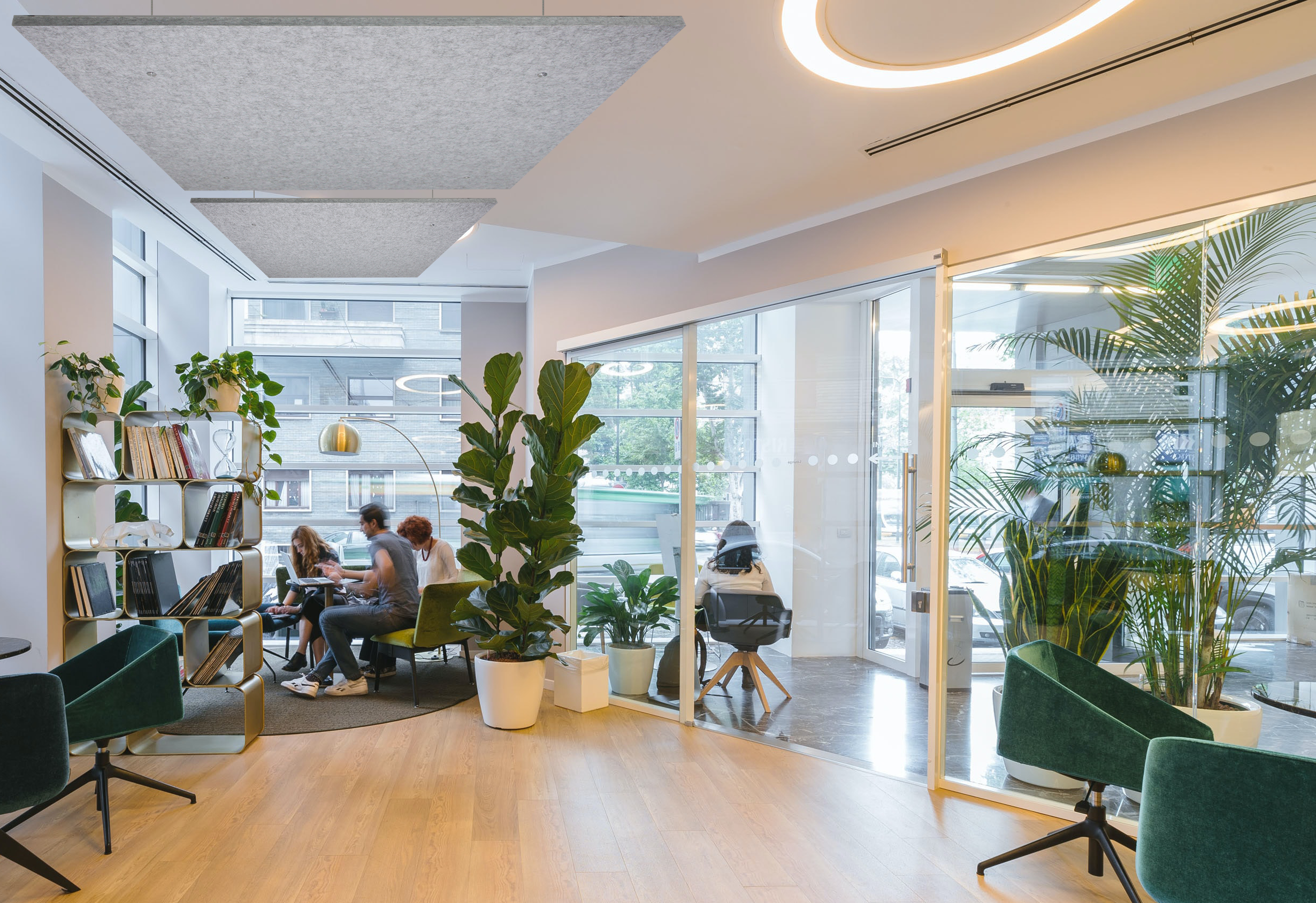Make the 2023 Trends in Office Space Work for Your Organization
Posted by Versare on Mar 6th 2023

We’ve all been through a lot in the past 2 years, and like it or not, coming out of the pandemic is shaping how we work. Whether it’s remote, hybrid, on-site retail, or in an office – Covid has had a profound impact on employee expectations, as well as employer reactions.
Yet, despite the increase and demand for remote and hybrid work policies, you can’t write off the workplace. 58% of U.S. business leaders will actively invest in their workplace and spaces for employees.1 And when employees are in the office, that’s the time to foster the right balance of connection, collaboration, and knowledge sharing, with productive spaces for team and individual work.
Just a few of the 2023 trends for how we work illustrate these changes.
1. Collaboration is the new work model
Creating spaces that support collaborative team time is growing. While employees need think time, they also need functional spaces that support cooperative planning, team updates, and problem-solving. Modern office spaces need the flexibility to create spaces that support team activities, with the right tools and furniture to support cooperative work.
2. Flexible workspace and flexible furniture
Hot desking or non-dedicated shared workspaces, and activity-based work areas, such as casual areas for brainstorming or quiet areas for focused writing, are a growing trend. Without a large remodel budget, these both require flexible furniture, such as rolling whiteboards, mobile units, screens, or reconfigurable cubicles. Having a flexible workspace also means that a room or area can easily be converted from one purpose to another – open areas might quickly turn into lounge areas or innovation zones.
3. Open working environments need shared private enclaves
The days of private offices are gone, but the need for accessible private space is still here. Creating a small enclave with a door, a few pieces of furniture, a table, a laptop connection, and a phone connection that can be shared among co-workers is a solution for quiet work. That’s where employees can go to look through notes, write, do research, or make calls that won’t disturb their team members. That privacy doesn’t exist in the way buildings are built today – but creative solutions like shared private enclaves can give them back some of the privacy and quiet they lost.
4. More informal conversation and work areas
Remote work has demonstrated that many office jobs can be completed successfully at home. The focus of going into the modern office is often for discussions, collaboration, creativity, and company culture building. As a result, you’ll see more informal areas for meetings, resource centers, as well as café-type seating. The Wall Street Journal recently reported that 60% of companies are redesigning their offices to accommodate the shift to hybrid work, with many eliminating private office spaces and devoting more space to open-space work areas2.
5. Turn the volume down
Today’s open work environment also means more noise in the workplace, yet employees still need a quiet and productive office space. Noise reduction starts from the ground up, with carpeting acting as a good sound absorber. But picking the right materials for workstations and cubicles and including sound-absorbing screens or ceiling or wall-mounted acoustic panels as you configure your workspaces will help dampen the noise.
Need a way to flex and sharpen up your workspace for today’s workforce? Contact us for a free quote!
1Mark Grinis, Francisco J. Acoba EY Future Workplace Index 2.0 https://www.ey.com/en_us/real-estate-hospitality-construction/workplace-of-the-future-index-2-0?WT.mc_id=10821121&AA.tsrc=paidsearch&gclid=Cj0KCQiAorKfBhC0ARIsAHDzslttD_uKDGwwyhZesIy6lxQhDjL2sjB_n6utFGiGY-r8fngiY6ffPssaAs5vEALw_wcB
2 Nohria, Nitin. The Wall Street Journal. The Post-Pandemic Office Should Be a Clubhouse. (2022, January 6). https://www.wsj.com/articles/the-post-pandemic-office-should-be-a-clubhouse-11641482830.

